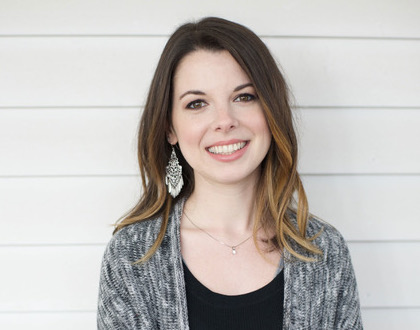Today's guest post comes from Cindy Wagman, President of The Good Partnership, which is on a mission to make great fundraising achievable for small nonprofits. Since we are entering prime fundraising season, I wanted Cindy's perspective on how to make the most of year-end efforts. And she's got some great advice for you!
Oh, hi!
If you’re like most of my clients, you’re the Executive Director for a small nonprofit and you’re juggling a million balls, trying to keep up with the increased holiday workload. On top of that, you need to take advantage of year-end fundraising. You’ve probably seen the infographics on Pinterest that show how much money comes in through donations to charities at year-end. Feel like you’re missing out, or behind the 8-ball?
Take a deep breath and grab a coffee or tea, and I’ll give you a few pointers on how to focus your year-end fundraising to maximize results with the least amount of effort.
Campaign vs. Appeal
First thing’s first. You need to think of year-end fundraising as a campaign, or mini campaign. It’s not just one direct mail package or one email asking for support. It’s also not a bunch of random asks that don’t have anything to do with each other. A campaign is cohesive and multi-channel, multi-touch. But, that doesn’t mean overwhelm. In fact, a campaign can help eliminate some of the overwhelm because it gives you a clear plan with a lot of messages that can be repeated, over and over.
At minimum, I want you to do a three-part email series with an ask in EACH one, some social media posts and, if you do traditional direct mail, at least one letter. If someone makes a donation, you can remove them from the subsequent communications.
Your Theme
Now that you have an outline of what you’re sending, you need to know what messaging to include. Pick one theme for your campaign and then have that theme run throughout all of your materials. Build on the story through your emails and social media posts, and keep in mind that it takes someone 8-10 times of seeing the SAME message to really internalize it. Don’t worry about repetition. Seriously, don’t worry about repetition.
Your Writing
So, there are some best practices when it comes to fundraising writing. Effective fundraising writing is not necessarily “good writing” and usually isn’t what we personally “like." But it works. It should be casual and friendly, with a specific and personal call to action. I’ve actually written a whole blog about just that, which you can read here.
Your Thank You
Your thank you is as important (or more important) than your ask.
Your campaign doesn’t end with a gift. In fact, what you send after someone donates is as important or more important than what you send in asking for it.
Create a thank you letter that directly reflects the ask. It should build on the same story as the rest of your campaign and give donors a sense of meaning for their contribution.
Also write a thank you call “script” (something short, sweet, and informal) and have your staff or board call to thank donors when they give.
Somewhere between three and six months after your campaign, create a short but meaningful donor update building on the same messaging as your campaign, to let your donors know what progress you’ve made thanks to their support.
Focus
It may seem like this is a lot to do, but if you focus it on one campaign with consistent messaging (and understanding that people need to see repeat messages for it to sink in), you can actually minimize your work and maximize your impact.
Here’s a quick checklist for your year-end campaign:
One theme/story to use throughout your campaign
1 letter (if you usually do letters), 3 emails, and a handful of social media to support the campaign
A thank you letter and phone call script
A 3-6 month update
You’ve got this! One final tip is to turn off your cell phone and notifications, sit down for a couple hours, and get this all written and drafted in one sitting. Batching work can often save many hours of switching back and forth.
Cindy Wagman is President of The Good Partnership, which wants to make great fundraising achievable for small nonprofits. She loves fundraising because she gets to see the most generous side of people, and helps match their passions with real action.
After 15 years as an in-house fundraiser, she left her 9 to 5 and created The Good Partnership to help the organizations that were closest to her heart. These were organizations that were driving change, and aligned with her priorities for her community, our society, and the world. She wants to help you be your authentic fundraiser and lead the change you want to see in the world.
PIN THIS POST FOR LATER:
I'm Kristi Porter, and I started Signify to provide writing, consulting and strategy services to nonprofits and for-profit organizations with a social mission, primarily through copywriting, marketing, and business communications. I believe that cause-focused organizations like yours are the future of business. You're proof that companies can both make money and do good. And I'm here to help you get noticed and grow. When you succeed, we all win.































